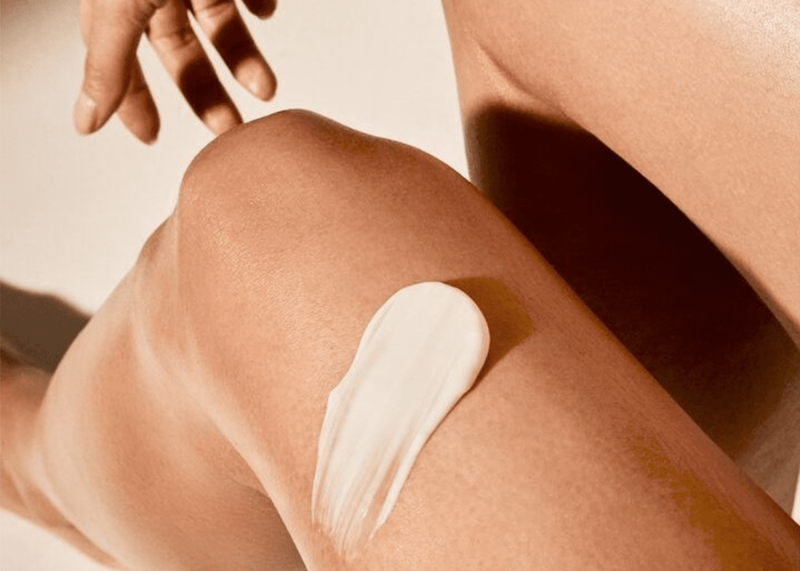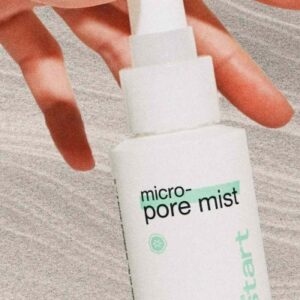
How to Choose The Takeaway
Trying to choose the right body moisturizer can be overwhelming. Maybe you don’t want something too thin. Perhaps you don’t want something too thick. But right in the middle isn’t always exactly your pick either. When it comes to this category, there are generally three options to choose from: cream, lotion, or gel.
Though they all have one thing in common—hydrating the skin on your body—there are notable differences between each type of formula. To help you get to the bottom of the debate, we turned to two dermatologists to do the explaining. Read on, to learn which moisturizer is best for your skin type and the differences between all three formulas.
What Is Gel Moisturizer?
Gel moisturizers are considered to be the lightest out of all three options. These formulas tend to have a water base, which results in a thin texture. “A gel moisturizer is [a product] that is most likely to contain oil or fats and offer less occlusive ingredients. This allows it to feel airier and lighter on the skin,” says Kseniya Kobets, MD, Director of Cosmetic Dermatology at Montefiore Einstein Advanced Care-Westchester. “However, they can still use hyaluronic acid or other sugars as a humectant to keep skin moisturized without the greasy feel.” Gel moisturizers come in all different types of packaging—jars, pumps, or tubes—since the consistency is so easy to manipulate.
- Consistency Level: Very lightweight.
- Best For: Many people prefer to use a gel moisturizer in the summer months because of its featherweight feature. It is also a common choice for patients who have overly oily or acne-prone skin, points out Morgan Rabach, MD, board-certified dermatologist and co-founder of LM Medical.
What Is Lotion?
Consider this the middle option in the cream vs. lotion vs. gel debate. “Lotion has more hydrating ingredients and may feel heavier than a gel. This is due to the [increased] use of fatty acids or other emollients [in the formula] compared to water,” Dr. Kobets says. Think of this category as your average body lotion. It delivers a quick and easy dose of hydration but doesn’t leave much residue behind or take very long to absorb.
“The thickness of a lotion is in between a gel and a cream,” Dr. Rabach says. “There is still more water content in a lotion than a cream and it is a looser consistency. Usually, lotions are packaged in a pump because they are loose enough to defy gravity in the [applicator] versus a cream which is more likely to be in a ‘scoop out’ container.”
- Consistency level: Medium thickness.
- Best for: Due to its balance of water and fatty acids, lotions are typically best for those with combination skin or conditions such as rosacea.
What Is Cream?
Out of all three types of moisturizers, cream is considered to be the thickest of the formulas. “Cream moisturizers are the [final] step up in hydration and occlusion,” says Dr. Kobets. “Typically they have more oil or fat-based formulas that protect the barrier of the skin.” She lists shea butter, glycerin, ceramides, niacinamide, or other hydrating emollients as common ingredients found in creams. This is a great choice for instances where you need to add high amounts of hydration back into the skin.
- Consistency level: Heavy and thick.
- Best for: This is the best option for those with super dry skin due to environment, skin type, or chronic dry skin conditions such as eczema.
How to Choose
It is important to note that all three types of moisturizers will do a similar job of hydrating your skin and maintaining the skin barrier. While the active ingredients may also look similar, the percentages and concentration levels will vary depending on the texture. For example, Dr. Kobet explains that gels have a higher concentration of water compared to lotions and creams. In the end, the choice comes down to two key factors—your skin type and texture preference.
Based on Texture
The key textural differences between creams vs. lotion vs. gel, come down to the levels of water vs oil. “The global difference between these moisturizers is the water content versus how much emollient and occlusive is added to the product,” Dr. Rabach says. More specifically, Dr. Kobets points out that the biggest variation is the ratio of oil (or fats) versus water. Slight tweaks in this proportion will impact how heavy a formula feels on the skin. To make it super simple, we ranked the three options in terms of texture below.
- Lightweight: Gel
- Medium: Lotion
- Heavy: Cream
Based on Skin Type
When choosing any beauty product you should always consider if it will suit your specific needs. Below, Dr. Kobet explains which moisturizer works best for each skin type.
- Oily or Acne-Prone Skin: Gel moisturizers feel lighter and absorb more quickly which may feel better if you have oily skin.
- Dry Skin: Creams are more hydrating and richly textured creams are a better fit for drier skin or conditions such as eczema.
- Combination Skin: Lotion is a middle ground that still feels light but still has hydrating benefits which is best for combo skin or conditions such as rosacea.
- Sensitive Skin: Experts share that any of the three can work but it should be formulated specifically for sensitive skin, specifically without fragrance or dyes.
The Takeaway
When choosing between cream vs. lotion vs. gel, picking the right one for you can be determined by your personal texture preference, skin type, or even the weather. For example, Dr. Kobets notes that in the summertime when we tend to sweat more, gels and lotions tend to feel better on the skin. Of course, if you have specific skin concerns or conditions it is always best to consult your dermatologist before trying new products.

